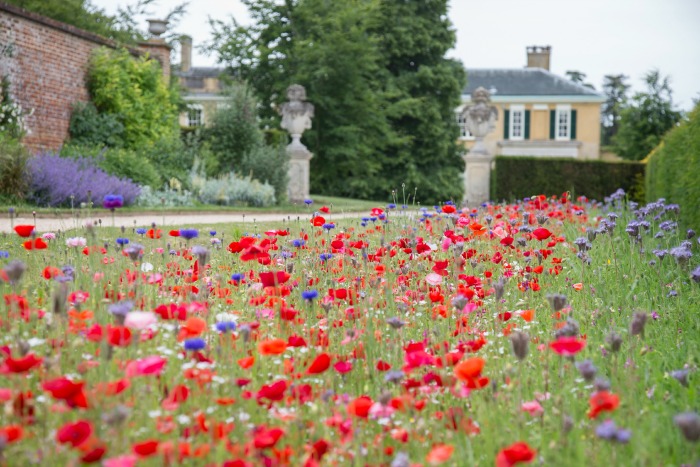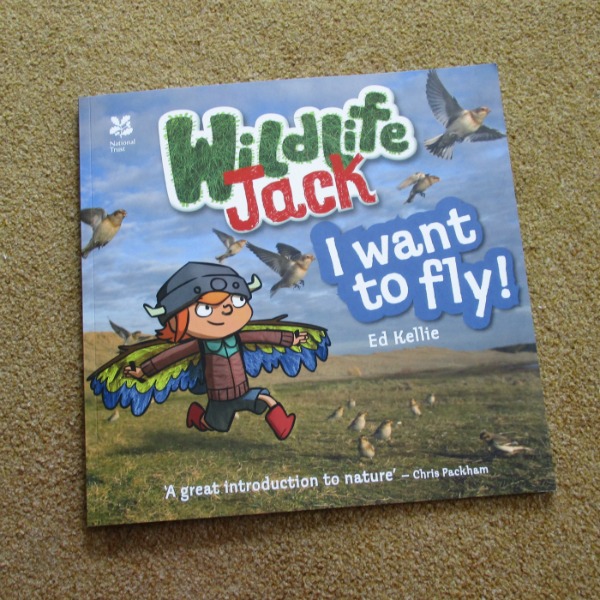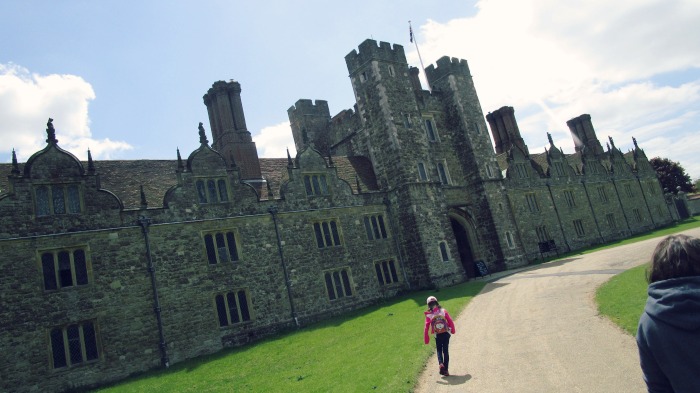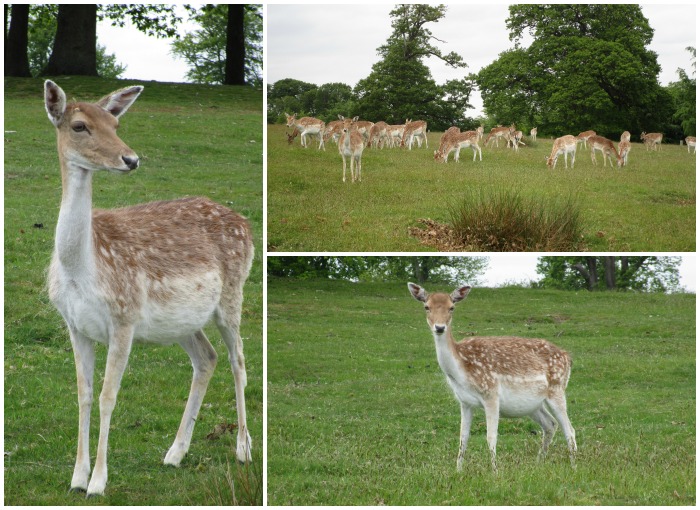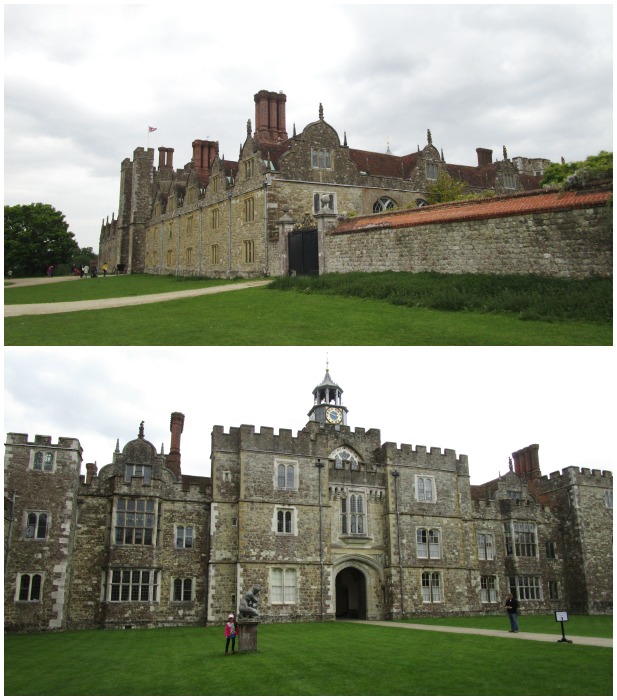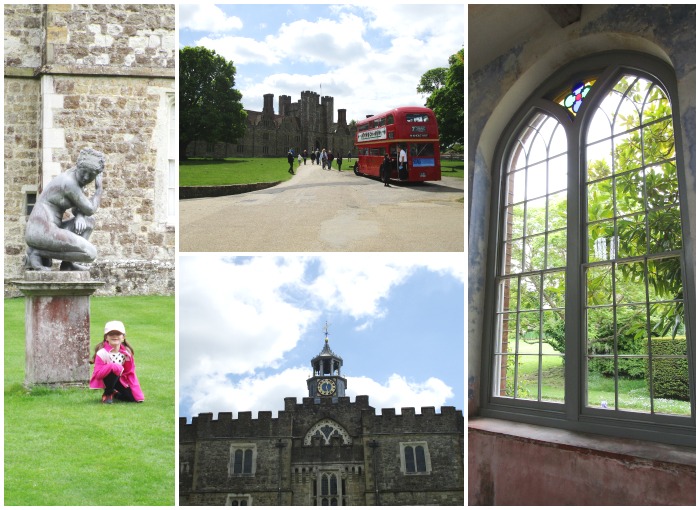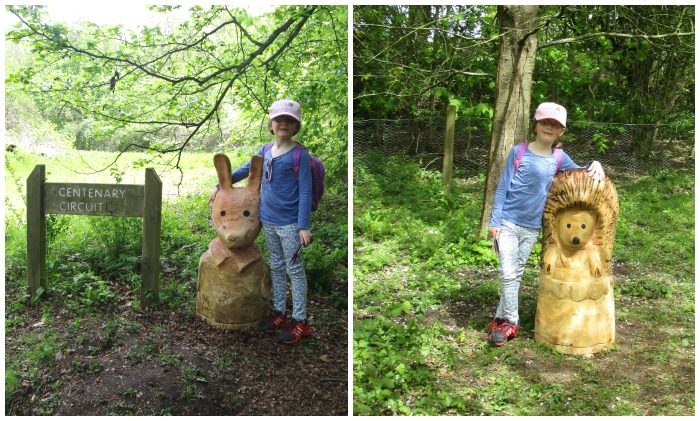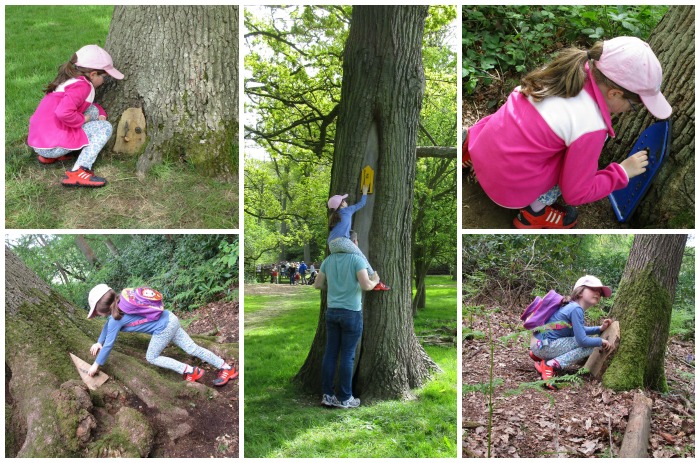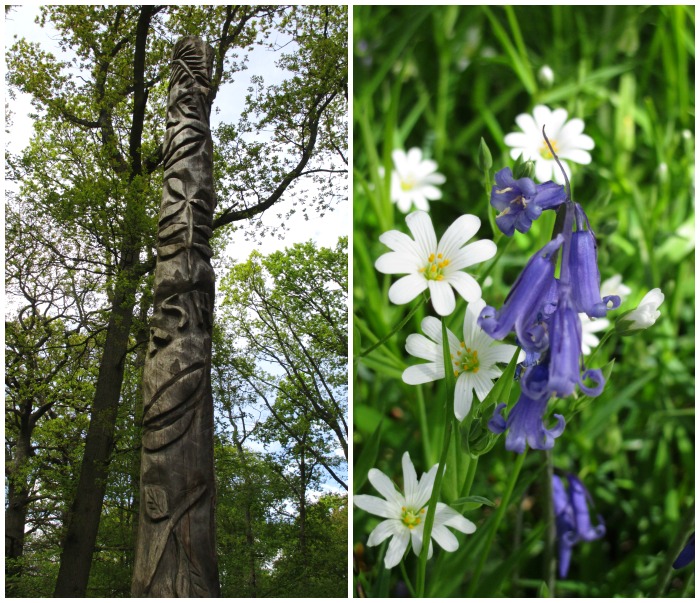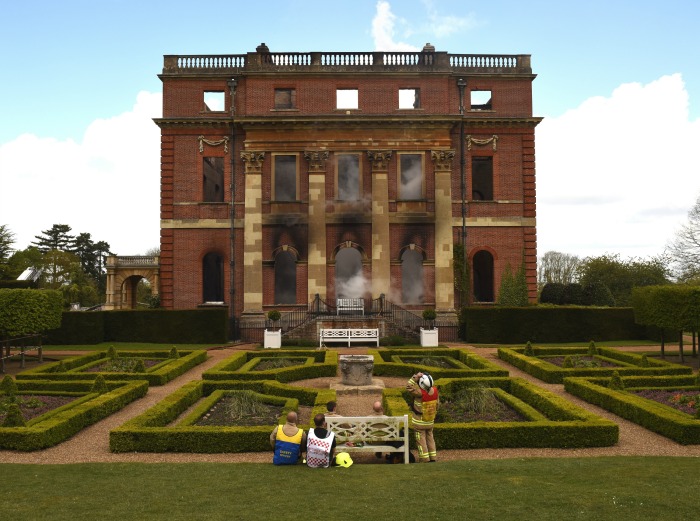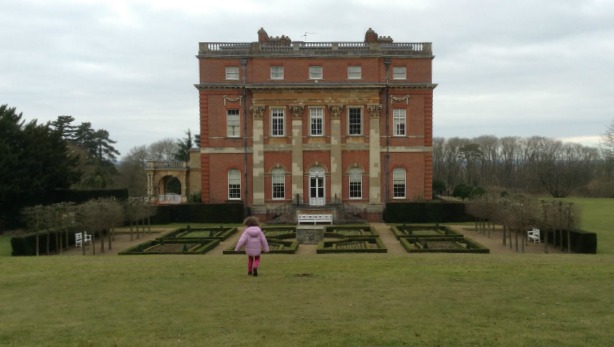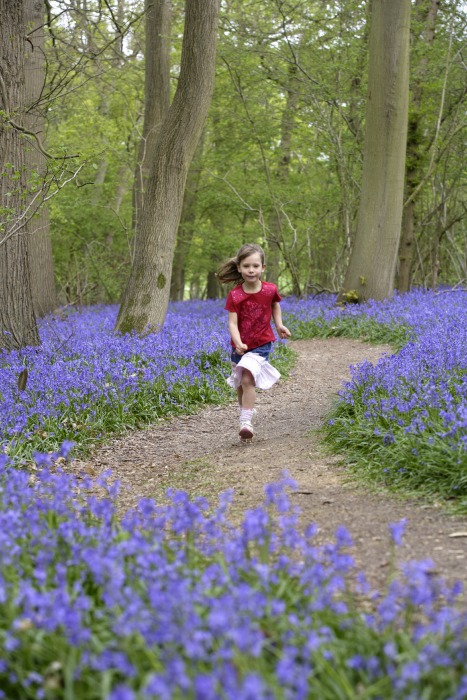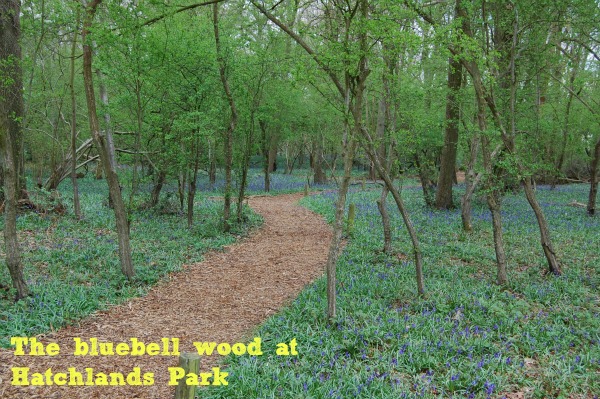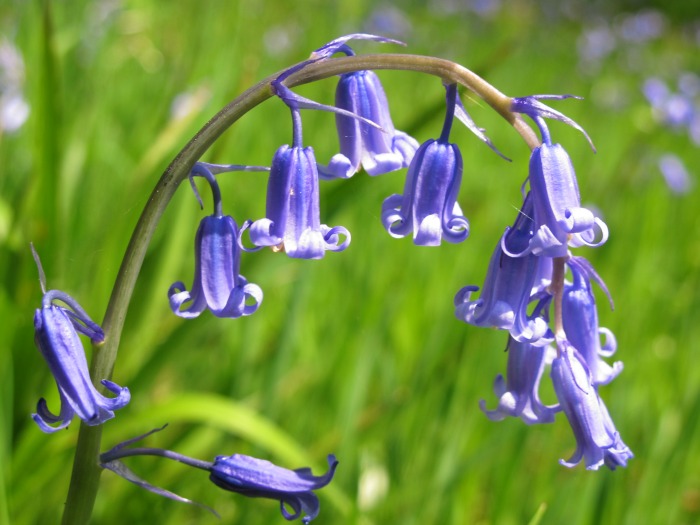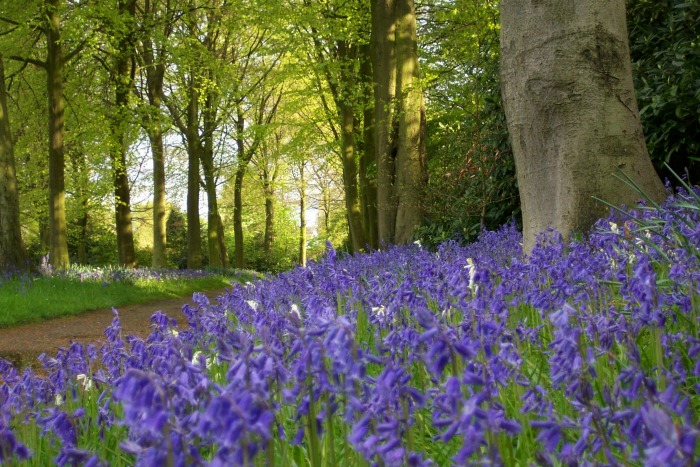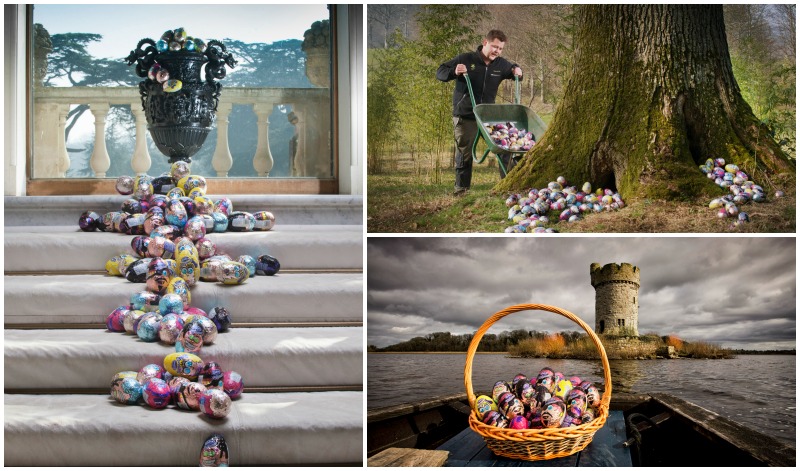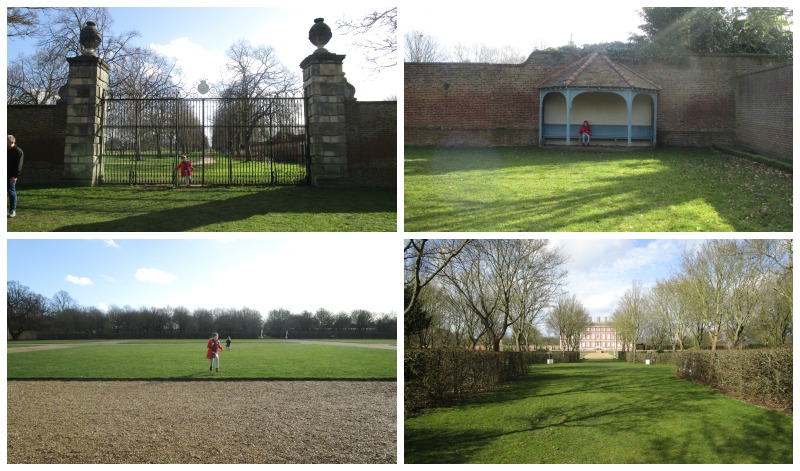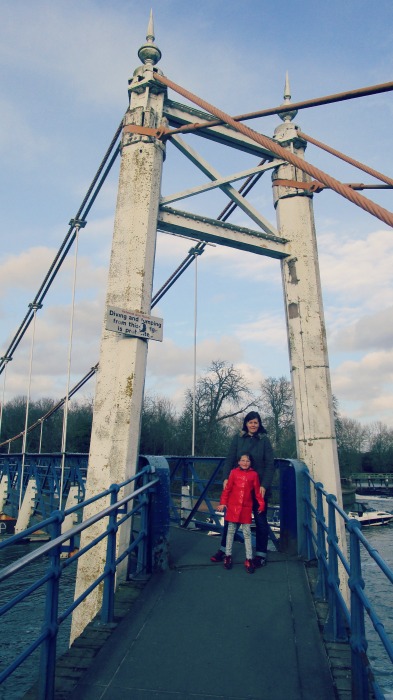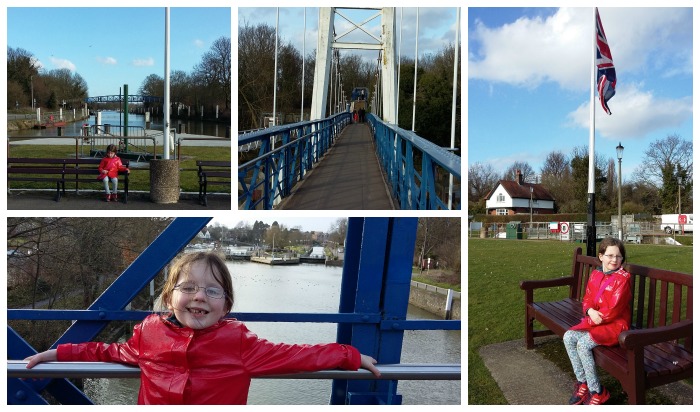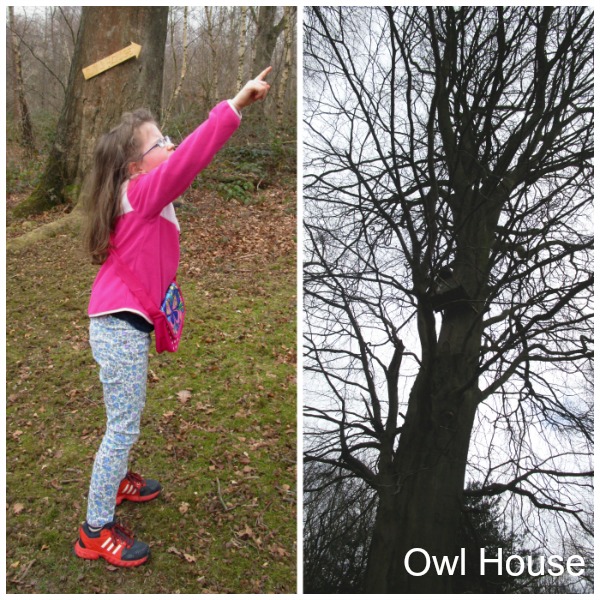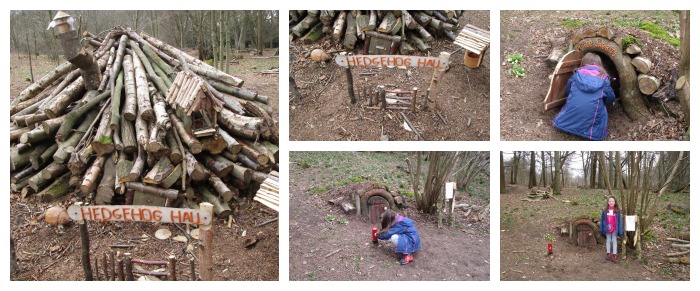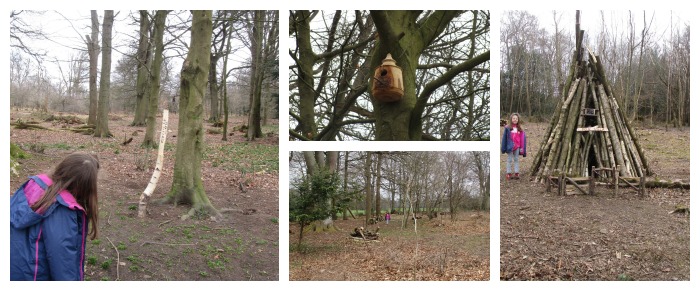As the days get longer and winter starts to fade, spring arrives in fresh bursts of colour and new life.
From the carpets of delicate bluebells in the gardens of Blickling Estate in Norfolk to the sheets of brilliant tulips at Sizergh Castle in the Lakes, a stroll in a National Trust garden is sure to dazzle and amaze.
It’s also a great time to experience nature springing back to life. Don’t miss the laburnum arch, a shimmering tunnel of golden blooms in late spring at Bodnant in Wales, or the aroma of azaleas and magnolias at Stourhead in Wiltshire.
Here are some of the top spring gardens and seasonal events to enjoy:
Anglesey Abbey, Gardens and Lode Mill, Cambridgeshire
Visit the grounds of this quintessentially English house for captivating views, vibrant colour and delicious scents in every season. Explore the picturesque working watermill and the wildlife discovery area. In spring, drifts of daffodils flourish throughout the grounds and over 4000 hyacinths emerge in the meticulously maintained flower beds of the formal garden. A sea of delicate tulips will emerge in the mystical Himalayan Silver birch grove to welcome the arrival of spring.
www.nationaltrust.org.uk/anglesey-abbey/
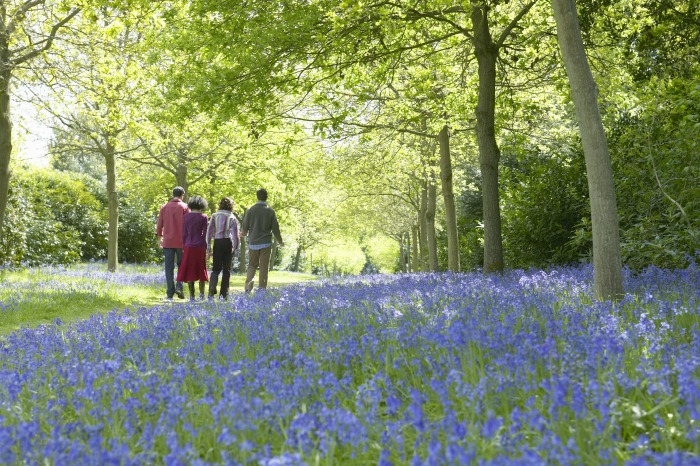
Blickling Estate, Norfolk
Four centuries of good husbandry have made Blickling’s 55 acre garden one of the greatest in England. It changes through the seasons and has evolved over the centuries to reflect different fashions. Visit in May and follow the winding paths through the great wood, and pass through the carpet of dainty English bluebells in spring; it’s one of the best places to see them in the country. At the heart of the garden, discover one of England’s great Jacobean houses. Don’t miss the fragrant beds of the parterre and inspiring double borders. You’ll find hellebores, daffodils and bluebells, azaleas and rhododendron, wisteria and peonies as well as quiet places to sit and enjoy the view. If you fancy getting active there are around 500 acres of parkland and woods to explore on foot or by bike. If you want to get away from it all try and find the secret garden – a great place for quiet contemplation and to listen to the spring bird chorus.
www.nationaltrust.org.uk/blickling-estate/
Bodnant Garden, Conwy
Marvel at plants from all over the world grown from seed and cuttings collected over a century ago. Created by five generations of one family, this 80 acre garden is located with wonderful views of Snowdonia. Its grand terraced lawns, renowned collection of rhododendrons and a gloriously romantic waterfall make it one of the most celebrated gardens in Wales. In spring don’t miss the Dell; hidden deep within a wooded valley, with the river Hiraethlyn chattering through it’s a riot of colour and a haven for wildlife. Spring is also the perfect season to visit the laburnum arch, which will be in full bloom by late May.
What’s On: The Far End is now open
The Far End will open for everyone to explore for the first time this spring. One of the oldest parts of the garden, it was originally laid out by Bodnant’s Victorian creator Henry Pochin. Pochin began by creating paths along the riverside and planting conifers, some of which are now Champion Trees. His successors continued planting trees and shrubs from all around the world along the banks of the River Hiraethlyn. The area was never opened to the public but over the last few years gardeners have been renovating banks, beds and paths, creating a new circular walkway and bridge which will give you an easy access, level route around this beautiful part of the garden. Now, three years on, the Far End has been completely rejuvenated and is open for everyone to enjoy.
www.nationaltrust.org.uk/bodnant-garden/
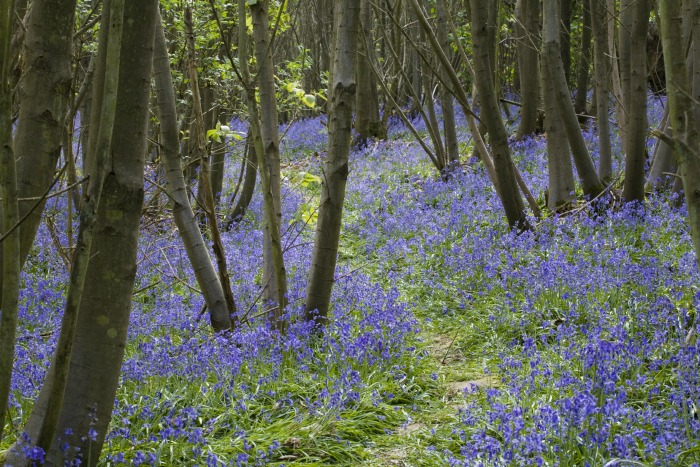
Sissinghurst Castle Garden, Kent
Wander through Sissinghurst Castle Garden for inspiring ideas or simply soak up spring. Enjoy the rich, warm colours of the cottage garden and on the Moat Walk discover a bank of bright yellow azaleas. Also known as the spring garden, the lime walk is one area where former owner Harold Nicolson controlled the design and planting. Long beds of tulips, fritillaries and hyacinths are marked out by an avenue of pleached limes, scattered by generous terracotta pots, every inch bursting with colour for about four weeks. Early spring sees this garden become a carpet of colour: pink chinodoxias, scillas and white anemones, looked over proudly by a Magnolia salicifolia and a big, bold mauve rhododendron.
What’s On: Bluebell and wildflower walks, 26 April & 1, 2 May, 1pm – 2.30pm
Come and see the spring woodland at this beautiful time of year on a guided walk with the ranger team. Finish the walk off with a cream tea in the Granary restaurant.
Price: £12.50 (normal admission fee applies, booking essential)
For more information, please call 01580 710700
Make a weekend of it: Stay in the Priest’s House, which sleeps six, and spend evenings relaxing in the grounds and gardens at Sissinghurst once everyone else has gone home. The cottage sits on the edge of the White Garden and is an absolute must-stay for garden lovers.
www.nationaltrust.org.uk/sissinghurst-castle-garden/
Morden Hall Park, London
With diverse landscapes and hidden histories, Morden Hall Park is a green oasis in suburbia. The river meanders through the former deer-park, creating a haven for wildlife. The 2.5 acre garden is the perfect place to relax with friends and family. When you step through the gates, you’d be forgiven for imagining yourself to be in the middle of the English countryside. Surrounded by meadows, trees and the gentle sounds of birdsong and running water, the park offers a rare sense of discovery and a chance to get away from it all. From late May until early September, wander around the 38 flowerbeds on both sides of the stream and take in the wonderful scent of roses and dahlias.
What’s On: Guided walk – a Victorian estate, 5 May & 6 June, 2pm – 4.30pm
Discover the past history of Morden Hall Park on a gentle tour of the estate. This will be followed by homemade seasonal soup or tea and cake in the Potting Shed Café.
Price: £9 (Includes tea and cake, booking essential)
For more information, please call 020 8545 6850
Summer garden party, 27 – 28 June, 11am – 5pm
Visit Morden Hall Park for a delightful two days in the rose garden to kick off the summer season. Wander around an array of artisan food stalls and be tempted by the delicious treats and produce on offer. Stop and watch one of the many cookery demonstrations or entertain the little ones with vintage games and rides. Why not bring along a picnic rug and simply relax amongst the roses.
Price: £4
For more information, please call 020 8545 6850
www.nationaltrust.org.uk/morden-hall-park/
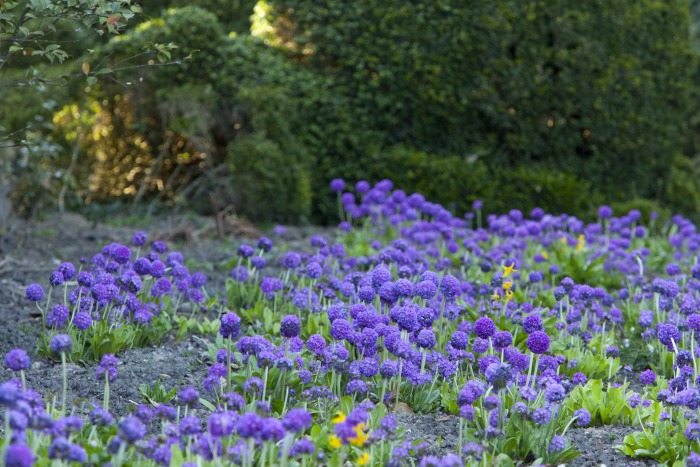
Nymans, West Sussex
This twentieth-century garden has an amazing collection of rare and important plants, bursting with colour in spring. Spot displays of camellias and magnolias and drifts of daffodils. Walk around the garden at your own pace or join a daily introductory talk or guided tour. One of our best spring highlights is the perfumed, flower filled walled garden. Full of daffodils, wild flowers and blossoms, a walk through the wall garden is a treat for all the senses. Watch out for camellias, magnolias, bluebells and rhododendrons throughout the estate and take a walk in the woodland and wild garden to see all that Nymans has to offer particularly at this time of year. Inspired by the garden lovers’ home there is a large shop and plant centre with a special collection of plants grown on site.
What’s On: Head gardener’s spring highlights walk, 16 April, 11am – 12pm
Take in the seasonal highlights of the garden and Arboretum with an exclusive guided tour with the Head Gardener. Find out what is at its best this season and what to look forward to in the following months. Hear about the garden projects and practises and have your questions answered. Finish off your walk with a warming beverage in the cafe.
Price: £5 (normal admission fee applies, booking essential, includes tea and coffee)
For more information, please call 01444 405250
What’s On: Introduction to gardening, 7 May, 11am – 12.30pm & 2pm – 3.30pm
Join a free introductory to gardening tour with the rangers discussing the Magnolias and Camellias at Nymans. Discover hints and tips each month that you can apply at home and learn more about how they garden at Nymans. Suitable for novices and enthusiasts.
Price: Free event (normal admission fee applies, booking advisable)
For more information, please call 01444 405250
Make a weekend of it: At the heart of Nymans Woods is the out of the way retreat Woodlands Cottage. With space for up to four people, it was once home to the estate’s game keeper. This is a real out-of-the-way retreat surrounded by beautiful woodland with walks and lakes, within an hour of London and 30 minutes from Brighton and the Sussex Coast.
www.nationaltrust.org.uk/nymans/
Hidcote, Gloucestershire
You’ll see a richness and diversity of plants from around the world at Hidcote. Lawrence Johnston was passionate about plants. He went to endless trouble and expense to find unusual varieties that would bring colour, scent, shape and texture to the garden. The garden is divided into a series of ‘outdoor rooms’, each with its own character. The formality of the ‘rooms’ melts away as you move through the garden away from the house. Lose yourself in a network of beautiful garden rooms waking from their winter slumber. Enjoy drifts of narcissus and later aquilegias and Welsh poppies in the Pillar Garden, and the blossom filled orchard with emerging wild flowers. Magnificent magnolias are filling the skies with a warm pink glow so make sure you don’t miss them this spring.
www.nationaltrust.org.uk/hidcote/
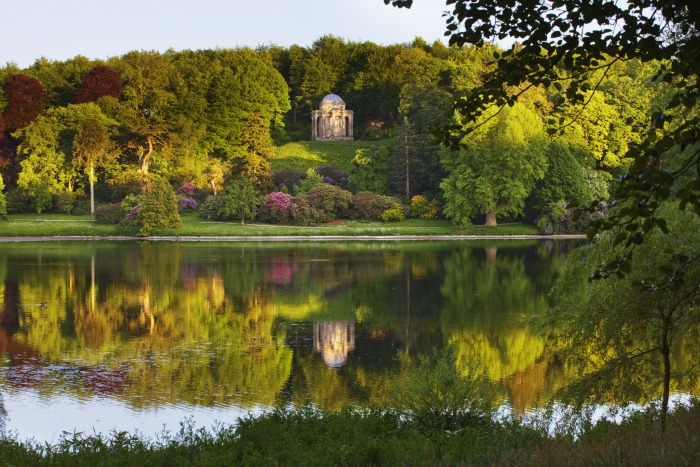
Stourhead, Wiltshire
This world-famous landscape garden has at its centrepiece a wonderful lake reflecting classical temples, mystical grottoes, rare and exotic trees and offers a day of fresh air and discovery. Stourhead house is set amongst ‘picnic perfect’ lawns and parklands, which are filled with beautiful blooms and colour throughout the spring months. The succession of azaleas, magnolias and rhododendrons bursting into flower brings the garden to life with subtle fragrances.
What’s On: Spring blooms garden tours, 1 – 31 May, 11.30am – 12.30pm & 1.30pm – 2.30pm
When Stourhead first opened in the 1740s, a magazine described it as ‘a living work of art’. This spring, experience Stourhead at its blooming best on a free guided tour.
Price: Free event (normal admission fee applies)
For more information, please call 01747 841152
Make a weekend of it: Just outside the gates of Stourhead garden, 89 Church Lawn is a pretty eighteenth century stone cottage which sleeps seven.
www.nationaltrust.org.uk/stourhead/
Glendurgan Garden, Cornwall
Lose yourself in the three valleys of Glendurgan Garden – full of fun, natural beauty and amazing plants. Described as a little bit of heaven on earth this sub-tropical garden blooms with magnolias, wild flowers and woodland flora, including drifts of bluebells during the spring months. There are exotic trees and shrubs dotted around the valley garden. In the spaces between, wildflower areas have been developed over the last twenty years. Enjoy them at their best in spring and early summer. The magnolias are stealing the show at the moment; enjoy their magnificence and spot many other spring favourites on a walk through the valley garden. Glendurgan was created with family entertainment in mind. The maze, giant’s stride swing and beach are all waiting to be explored.
Make a weekend of it: At the foot of the valley that is home to Glendurgan Garden are three beach side cottages, The Old School House, Quay Cottage and Beach Cottage in the lovely hamlet of Durgan. Tucked away in the woods is a tiny timber built, thatched cabin for two, called Wood Cottage.
www.nationaltrust.org.uk/glendurgan-garden/
Trengwainton Garden, Cornwall
Traditionally known as the National Trust’s earliest flowering spring garden, there are breath-taking displays of magnolias, rhododendrons and camellias throughout the spring at Trengwainton, along with a beautiful walled kitchen garden full of ideas for your own growing space. Follow winding, wooded paths, find picnic spots by the stream or sit in quiet corners and breathe in the peace of this special place. The lower walled garden contains plants from around the globe and now is the perfect time to see the flowering magnolias in all their glory. The shelter of the brick walls, and west Cornwall’s mild climate, provide the conditions for more tender species to survive outdoors.
What’s On: National Gardens Scheme open day, 26 April, 7 June, 10.30am – 5pm
Discover exotic plants, an inspirational walled garden and beautiful sea views from the Terrace. Free guided tour at 11.30am. All entry proceeds and any donations for the tour will go to the NGS.
Price: Free event (normal admission fee applies)
For more information, please call 01736 363148
Make a weekend of it: Stay in spacious the Nanceglos House, on the boundary of the garden at Trengwainton. With original features including its own well, this large cottage is ideal for gatherings of friends and family, sleeping nine.
www.nationaltrust.org.uk/trengwainton-garden/
Clumber Park, Nottinghamshire
With 3,800 acres of parkland and gardens, peaceful woodlands and a magnificent lake to enjoy there is plenty of space to explore and relax with your family and friends at Clumber, especially in spring when the woodland is alive with birdsong and a shimmering carpet of bluebells. The beautiful walled kitchen garden is famous for growing hundreds of varieties of fruit, vegetables, herbs, and has the biggest collection of culinary rhubarbs in the country. Clumber Park also boasts the longest avenue of double lime trees in Europe. Planted around 1840 to line one of the main entrances into the Park, the majestic Limetree Avenue is over two miles long.
What’s On: Rhubarb weekend, 9 – 10 May, 12pm – 4pm
Indulge in all things rhubarb in the Walled Kitchen Garden at Clumber Park including tastings, demonstrations, games and rhubarb-themed tours. Pick up some rhubarb for sale to enjoy at home and celebrate Clumber’s National Rhubarb Collection.
Price: Free event (normal admission fee applies)
For more information, please call 01909 544904
www.nationaltrust.org.uk/clumber-park/
Sizergh Castle, Cumbria
Tucked away outside of Kendal, Sizergh Castle has beautiful gardens and 1600 acres of estate to explore. You’ll find real variety in the garden – from the formal Dutch garden to the wilder landscape of the magnificent limestone rock garden. Sizergh has been allowed to evolve and expand gradually over 300 years and is still being developed to this day. During spring see the brightly coloured tulips on the top terrace, walk beneath cherry blossom in the Dutch garden and enjoy the spring colours in the rock garden. There are lots of frogs, newts and numerous species of birds to spot, as well as bees and hens in the apple orchard.
Make a weekend of it: Holeslack Farmhouse is a perfect country cottage. The farmhouse is on the Sizergh Castle estate that stands at the gateway to the Lake District and is set in 1600 acres of limestone countryside. Grade II listed it has many original features including a spiral staircase and seventeenth century oak cupboards. The farmhouse sleeps eight.
www.nationaltrust.org.uk/sizergh/
Fountains Abbey and Studley Royal (Water Garden), North Yorkshire
Explore the ruins of the twelfth-century Fountains Abbey and spot dainty spring flowers breaking through this stunning landscape. The water garden is just as spectacular with its moon-shaped ponds and classical statuary. Studley Royal Water Garden was the breath-taking vision of John Aislabie and his son William. In the early eighteenth-century John Aislabie had great plans to impress visitors to his Yorkshire estate and turned the wild and wooded valley of the river Skell into one of England’s most spectacular Georgian water gardens. Amazingly the garden you see today is little changed from the one that would have impressed Aislabie’s visitors 200 years ago. Look out for primroses and wood anemones and catch the scent of wild garlic in the woods around the abbey.
What’s On: Water Garden tour, 9, 29, 30 May, 2pm – 3.30pm
Travel back in time to Studley Royal in the elegant Georgian era. Hear how the creative genius of the Aislabie family produced this World Heritage Site garden.
Price: Free event (normal admission fee applies)
For more information, please call 01765 60888828
Make a weekend of it: With eleven holiday cottages on offer, including apartments in the luxurious Fountains Hall and five cottages converted from a group of eighteenth century farm buildings there’s plenty of choice at this World Heritage Site.
www.nationaltrust.org.uk/fountains-abbey/
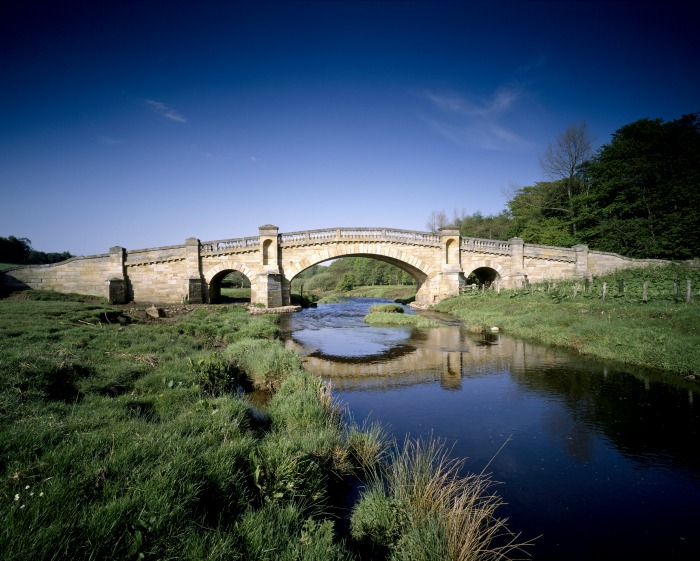
Wallington, Northumberland
Discover Wallington, a much-loved home to generations of the unconventional Trevelyan family. The Trevelyans loved being outdoors and close to nature and the house is surrounded by an informal landscape of lawns, lakes, woodland, parkland and farmland just waiting to be explored. Soak up the atmosphere of the tranquil East Woods, alive with the sound of birdsong and discover the beautiful walled garden, a colourful haven of tranquillity in the springtime.
What’s On: Ranger walk – Wallington’s swan lake, 12 May, 10.30am – 12.30pm
Visit for an exclusive tour of Rothley Lake and discover the wonderful wildlife that lives in this hidden site. Rothley Lake was originally designed by ‘Capability’ Brown to be a fishing lake but is now one of the top spots for wildlife on the Wallington estate and home to red squirrels, otters, crayfish, wild flowers and, of course, swans. Take a minibus trip to the lake and join a special guided walk to look for wildlife and find out about the history and archaeology of the lake.
Price: £4 (normal admission fee applies, booking essential)
For more information, please call 01670 773606
www.nationaltrust.org.uk/wallington/
Rowallane Garden, County Down
Rowallane contains a treasure trove of exotic plants from around the world and spring time is one of the most exciting times to visit. This is when the enormous and much-admired collection of rhododendrons burst into colour. The magical walled garden is also a must see for the magnolias, daphnes and azaleas.The garden was created by Reverend John Moore in mid-1860s, planting woodland and using interesting stone ornamentation to sculpt the informal landscape. His nephew, Hugh Armytage Moore, continued his work from 1903, mingling exotic species with native plants – giving the garden a dramatic atmosphere.
What’s On: Spring plant fair, 2 – 3 May, 11am – 4pm
A wonderful opportunity to purchase plants from a range of specialist plant stalls, as well as from Rowallane Garden.
Price: Free event (normal admission fee applies)
For more information, please call 02897510131
www.nationaltrust.org.uk/rowallane-garden/
To find out more about booking a holiday cottage please visit: www.nationaltrustcottages.co.uk
